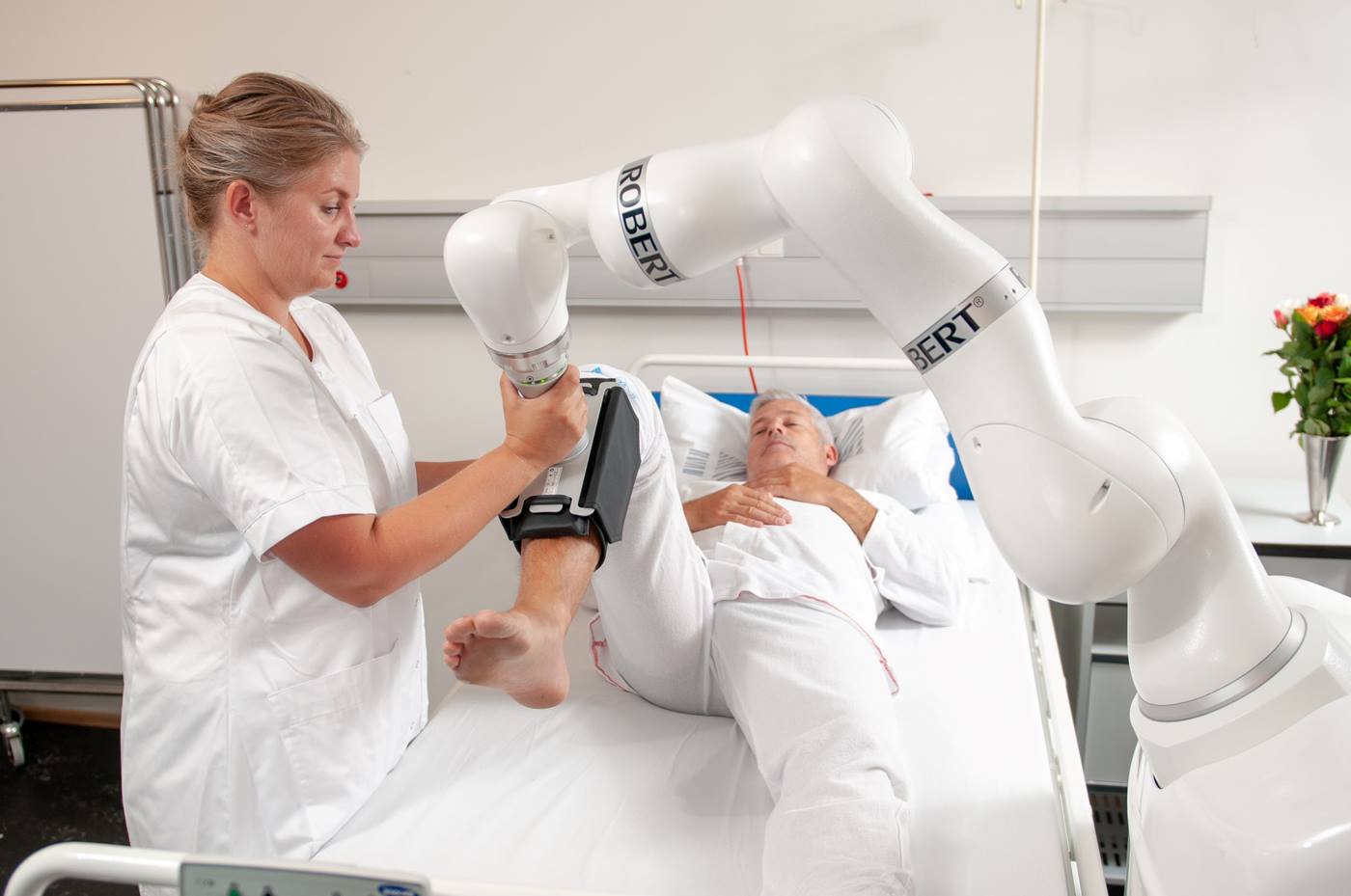
In times of Social Distancing: Rehab Robot Supports Physiotherapists
With ROBERT, the company Life Science Robotics (LSR) has developed a robot for mobilizing patients. Especially in times of social distancing, the robot-based medical device ROBERT can support physiotherapists in their work. The lightweight robot LBR Med from KUKA is used for this purpose.
8 April 2020
The robot-based medical device ROBERT supports physiotherapists in their work. Technical assistants can be used in particular when people have to keep their distance from each other in order to prevent the coronavirus from spreading. “The demand for our product has increased significantly because hospitals would like to reduce the direct physical contact to patients. With our solution, we want to help to mobilize patients faster and more efficiently, while relieving the burden on physiotherapists," says Keld Thorsen, CEO of Life Science Robotics, based in Aalborg, Denmark.
The company was founded in 2014 and now employs eight people. It all started in Denmark. Currently, Thorsen also has requests from major German hospital groups and one university hospital, where ROBERT already has been on trial for three months. This medical product, in which LSR integrates the lightweight robot LBR Med from KUKA, has also been FDA-cleared for sale in the USA since March 2020 by the U. S. Food and Drug Administration (FDA) authorities.

More and more robots are being integrated into medical devices. We are proud to help shape automation in the medical sector.
Mobilize patients faster with rehabilitation robots
During the corona crisis it is more important than ever to have enough qualified personnel and hospital beds available. "Basically, with ROBERT we are improving efficiency in the healthcare system", Thorsen points out and adds: "The longer a patient lies untrained in bed, the longer the rehabilitation takes and other complications such as muscle reductions and blood clots can occur". ROBERT works individually and flexibly and very precisely. It can perform exactly the same movements over and over again – without interruption, fatigue or time restrictions.

There are two possible ways to use ROBERT – either for active training or passive training if the patient is still too weak. As part of the active training the set up only takes a maximum of five minutes. After that the patient can train on its own as long as it is recommended, including breaks. This relieves the physiotherapist, who gains time and can look after other patients. In addition, the patient can be mobilized more frequently, regardless of whether a therapist is currently not available or is not allowed to have intensive contact with patients.
Clinical tests underway – first rehabilitation robots already in use
In order to develop a competitive robotic solution that is above all suitable for everyday use, the company is working closely with Odense University Hospital and other hospitals. During the approval process, the LBR Med from KUKA helps a lot. It is the only robot certified for integration into a medical device. ROBERT is already in use today in Denmark and Germany. Three ROBERTs are on their way to Texas to support in hospitals in Houston. Life Science Robotics currently focuses on new software upgrades. The latest update included sound effects to make the training even easier. Right now, the aim of the company is a successful product launch and establishment in the USA and Europe.

